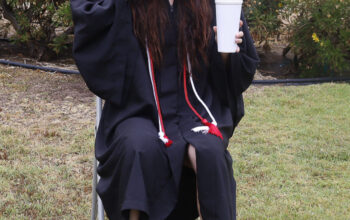How we’ve bought into the marketing of romance
The principles of Valentine’s Day typically encompass celebrations of romance and love, but it has actually become a frenzy of consumerism.
After New Year’s, it seems almost overnight, stores become stocked with Valentine’s Day merchandise. Everything from heart shaped candies, to cupcakes made with red icing, to heart shaped boxes of chocolate are loaded onto shelves more than a month in advance of the holiday.
While this may be perceived as an effort to get the public in the holiday spirit, companies are trying to gear up for the highly anticipated buying spree on the only heart-shaped day on the calendar: Feb. 14.
Let’s look at the numbers. CNN reported in 2013 that consumers spend an average of $1.6 billion on candy, $1.9 billion on flowers, and $4.4 billion on diamonds, silver, and gold. In total, consumers are estimated to spend more than $18 billion that day.
Near February, the price of roses in Los Angeles rise far above the average 70 cents per stem, according to Reuters.
That means consumers will likely pay an average retail price of $54 for a dozen roses — without the added vase or romantic note.
The downside to all this is if you want to show your significant other that you love and care for them by purchasing a bouquet of roses, it is way more cost effective to buy them on literally any other day of the year.
In terms of saving money and keeping your relationship healthy, don’t rely on the one-time occasion of Valentine’s Day. Having a regular date night with your significant other is one way you can ensure an effective relationship, according to Psychology Today.
Granted, it is valid to believe that on Valentine’s Day the money spent is besides the point. If it makes a loved one feel good by gifting them a heart-shaped box of chocolates or a teddy bear, the cost is worth it.
However, to those who don’t have that special someone or a companion to celebrate with, Valentine’s Day can be viewed as a day of heartbreak and loneliness.
So—why celebrate it and waste the money?
Anti-Valentine’s Day festivities have become increasingly popular and sometimes occur several days before the actual holiday. These parties have a range of purposes that include airing out built-up frustration over breakups and giving people an opportunity to party.
For more than 20 years, Hollywood’s Birds Cafe and Bar has been celebrating Anti-Valentine’s Day with a night filled with special cocktails, un-romantic heart-shaped decor, and even life-sized voodoo dolls that are set on fire at the end of the night, according to LA Weekly.
In other words, in addition to marketing to lovers, business and corporations are also using Valentine’s Day to capitalize on consumer’s feelings of heartbreak and sorrow.
Despite Valentine’s Day’s intention to recognize non-material items like the love shared between two people, the bottom line of any marketing campaign is to make a profit and promote the consumption of goods.
By all standards, ‘campaign Valentine’s Day’ meets its mark year after year — all $18.6 billion.


